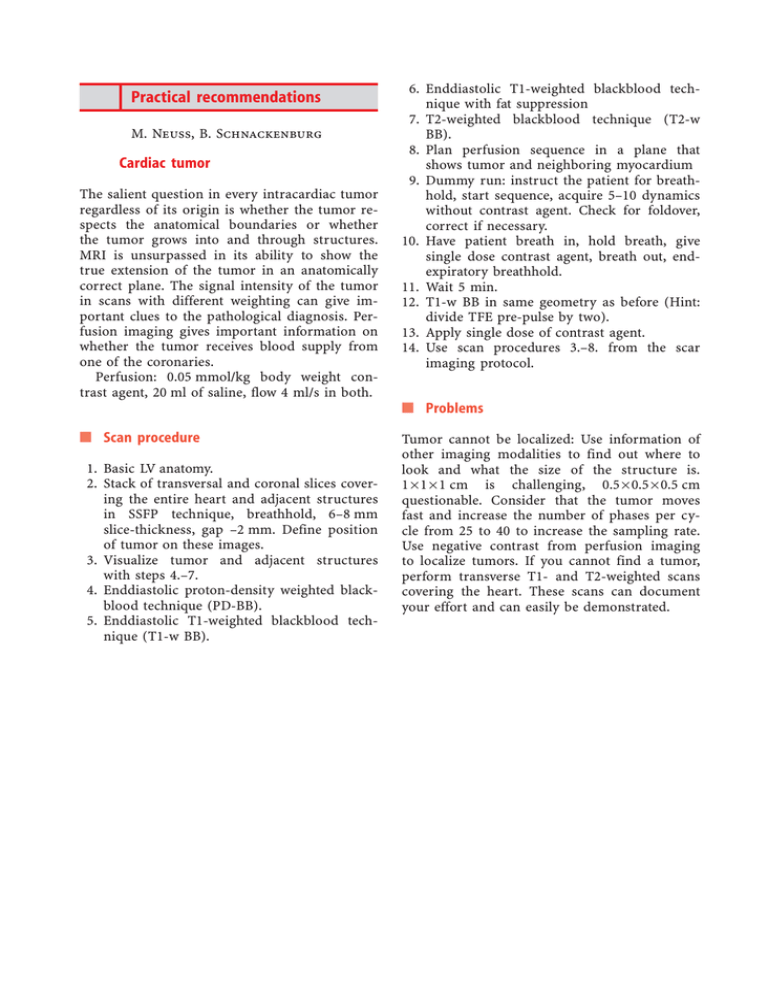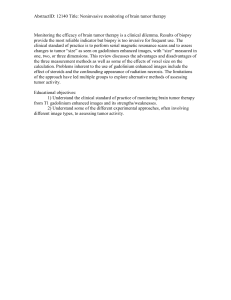Practical recommendations
advertisement

Practical recommendations M. Neuss, B. Schnackenburg Cardiac tumor The salient question in every intracardiac tumor regardless of its origin is whether the tumor respects the anatomical boundaries or whether the tumor grows into and through structures. MRI is unsurpassed in its ability to show the true extension of the tumor in an anatomically correct plane. The signal intensity of the tumor in scans with different weighting can give important clues to the pathological diagnosis. Perfusion imaging gives important information on whether the tumor receives blood supply from one of the coronaries. Perfusion: 0.05 mmol/kg body weight contrast agent, 20 ml of saline, flow 4 ml/s in both. n Scan procedure 1. Basic LV anatomy. 2. Stack of transversal and coronal slices covering the entire heart and adjacent structures in SSFP technique, breathhold, 6–8 mm slice-thickness, gap –2 mm. Define position of tumor on these images. 3. Visualize tumor and adjacent structures with steps 4.–7. 4. Enddiastolic proton-density weighted blackblood technique (PD-BB). 5. Enddiastolic T1-weighted blackblood technique (T1-w BB). 6. Enddiastolic T1-weighted blackblood technique with fat suppression 7. T2-weighted blackblood technique (T2-w BB). 8. Plan perfusion sequence in a plane that shows tumor and neighboring myocardium 9. Dummy run: instruct the patient for breathhold, start sequence, acquire 5–10 dynamics without contrast agent. Check for foldover, correct if necessary. 10. Have patient breath in, hold breath, give single dose contrast agent, breath out, endexpiratory breathhold. 11. Wait 5 min. 12. T1-w BB in same geometry as before (Hint: divide TFE pre-pulse by two). 13. Apply single dose of contrast agent. 14. Use scan procedures 3.–8. from the scar imaging protocol. n Problems Tumor cannot be localized: Use information of other imaging modalities to find out where to look and what the size of the structure is. 1 ´ 1 ´ 1 cm is challenging, 0.5 ´ 0.5 ´ 0.5 cm questionable. Consider that the tumor moves fast and increase the number of phases per cycle from 25 to 40 to increase the sampling rate. Use negative contrast from perfusion imaging to localize tumors. If you cannot find a tumor, perform transverse T1- and T2-weighted scans covering the heart. These scans can document your effort and can easily be demonstrated.




